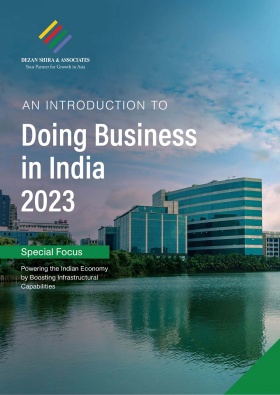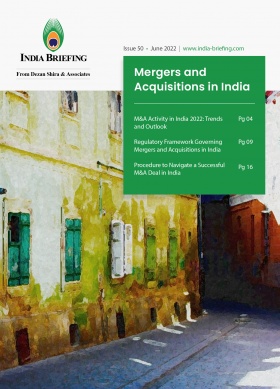Navigating Shifting Geopolitics: India-Saudi Arabia Economic Ties in Focus
In light of shifting geopolitical circumstances, India and Saudi Arabia are concentrating on strengthening their economic ties. Given that Saudi Arabia is currently India’s fourth-largest trading partner, they view one another as crucial allies. India’s participation in BRICS and Shanghai Cooperation Organization (SCO) is especially valuable given Saudi Arabia’s aim of forging balanced ties throughout Eurasia. Moreover, Saudi Arabia has expressed keen interest in India’s energy industry, and both countries intend to expand their bilateral investments.
India and Saudi Arabia are reinventing their economic strategy with an eye towards progress and prosperity amid turbulent geopolitical changes in their respective regions. Both nations view one another as important allies and are anxious to expand their trade and investment alliances for mutual gain. Notably, Saudi Arabia has emerged as India’s fourth-largest trading partner after the US, China, and the United Arab Emirates, with trade between the two nations accounting for 4.14 percent of India’s total trade in the FY 2022.
To strengthen their trade ties, India and Saudi Arabia are exploring the possibility of institutionalizing commercial activity in rupee and riyal. This aligns with India’s broader efforts to trade in national currencies with other countries, such as UAE and Russia. By doing so, the two nations hope to make their trade more secure from global headwinds.
Trends in India-Saudi Arabia trade: Growing bilateral ties and dependency on oil imports
The economic relationship between India and Saudi Arabia is built on mutual interdependence. India relies on Saudi Arabia’s energy resources while the kingdom depends on Indian labor and food to fuel its economy. The extensive list of goods that Saudi Arabia imports from India highlights the potential for collaboration between the two countries, including textiles, food products, organic chemicals, machinery, minerals, and fertilizers.
In recent years, India’s trade with Saudi Arabia has experienced significant growth, particularly in the oil sector. As India’s energy demands continue to rise, Saudi Arabia has become a critical supplier, accounting for about 18 percent of India’s crude oil imports.
Additionally, Saudi Arabia covers around 30 percent of India’s LPG requirements, making it India’s second-largest oil source. However, with domestic energy sources covering only up to 15 percent of the demand, India heavily relies on energy imports, making bilateral trade tilted in favor of Riyadh. In FY 2022, India imported US$34.1 billion worth of products from Saudi Arabia, with total bilateral trade amounting to US$42.8 billion, showing significant growth compared to previous years.
|
India-Saudi Arabia Bilateral Trade (US$ Million) |
||
|
Year |
Imports from Saudi Arabia to India |
Exports from India to Saudi Arabia |
|
FY 2018 |
22,070 |
5,411 |
|
FY 2019 |
28,479 |
5,562 |
|
FY 2020 |
26,857 |
6,237 |
|
FY 2021 |
16,187 |
5,857 |
|
FY 2022 |
34,100 |
8,758 |
This trend is reflective of the developing ties between India and the Gulf Cooperation Countries (GCC), with India eyeing a free trade agreement with the GCC. As per data from India’s commerce ministry, bilateral trade between India and the GCC has increased to US$154.73 billion in FY 2021-22 from US$87.4 billion in FY 2021. India’s exports to the GCC witnessed a 58.26 percent increase to about US$44 billion in FY 2022, against US$27.8 billion in FY 2021.
India’s top three exports to the GCC member countries include crude petroleum (40 percent), petroleum gas (18 percent), and diamonds (eight percent). At the same time, India’s import basket from the GCC comprises of refined petroleum (14 percent), jewelry (eight percent), and rice (seven percent).
|
India-GCC Trade Statistics (US$ Million) |
||||||||
|
Year |
Saudi Arabia |
UAE |
Oman |
Kuwait |
Qatar |
Bahrain |
Total |
|
|
Imports |
FY 2018 |
22,070 |
21,739 |
4,264 |
7,166 |
8,409 |
431 |
64,079 |
|
FY 2019 |
28,479 |
29,785 |
2,759 |
7,431 |
10,722 |
540 |
79,716 |
|
|
FY 2020 |
26,857 |
30,257 |
3,669 |
9,574 |
9,686 |
422 |
80,465 |
|
|
FY 2021 |
16,187 |
26,623 |
3,088 |
5,214 |
7,930 |
547 |
59,589 |
|
|
FY 2022 |
34,100 |
44,833 |
6,840 |
11,001 |
13,193 |
753 |
1,10,720 |
|
|
Exports |
FY 2018 |
5,411 |
28,146 |
2,439 |
1,366 |
1,472 |
557 |
39,391 |
|
FY 2019 |
5,562 |
30,127 |
2,246 |
1,334 |
1,611 |
742 |
41,622 |
|
|
FY 2020 |
6,237 |
28,854 |
2,262 |
1,287 |
1,268 |
559 |
40,466 |
|
|
FY 2021 |
5,857 |
16,695 |
2,355 |
1,287 |
1,285 |
528 |
87,364 |
|
|
FY 2022 |
8,758 |
28,044 |
3,148 |
1,241 |
1,837 |
899 |
43,927 |
|
India-Saudi Arabia investment trends: Opportunities and setbacks
India and Saudi Arabia have been engaging in bilateral investments to strengthen their economic ties. In 2021, Saudi Arabia was ranked as India’s 17th largest investor. Notable investments from Saudi Arabia include the West Coast Refinery & Petrochemicals Project in Maharashtra, worth US$44 billion, which involves companies like Saudi ARAMCO and Abu Dhabi National Oil Company. Soft Bank’s Vision Fund has also invested in several promising Indian startups.
In late 2021, Saudi Arabia invested more than US$3.13 billion in India, with the majority of the investment made by the Public Investment Fund (PIF). PIF’s investment of US$1.5 billion to purchase a 2.32 percent stake in Reliance Jio Platforms and US$1.3 billion to buy a 2.04 percent stake in Reliance Retail Ventures Limited were the largest investments made. PIF’s interest in these Indian companies aligns with Saudi Arabia’s ambitious plan to transform its economy and strategic position, with PIF set to become the world’s largest sovereign wealth fund. Other investments made by Saudi Arabia include SABIC’s investment of US$100 million in an innovation center in Bengaluru and the investment in India healthtech Healthifyme.
Indian companies like TATA, Wipro, and Air India have also made significant investments in Saudi Arabia. In fact, Larsen & Toubro, a Mumbai-based company, has even secured a deal to implement the world’s largest solar project in Saudi Arabia. Additionally, Samvardhana Motherson International has signed an agreement with Saudi Arabia’s Ministry of Investment to create investment opportunities in bilateral ties.
Both nations have plans to expand bilateral investments, and Saudi Arabia has expressed interest in investing in India’s energy sector. To facilitate investment, India and Saudi Arabia are actively collaborating on an investment bridge mechanism that could potentially evolve into an institutional framework to promote trade between the two nations.
However, there have been setbacks, such as ARAMCO’s failed attempt to take part in India’s Ratnagiri refinery and petrochemicals project, and the cancellation of a US$15 billion transaction by ARAMCO to obtain a 20 percent stake in India’s Reliance Industries Limited. Despite these setbacks, the overall momentum of India-Saudi Arabia investment trends remains positive.
Strengthening strategic partnership for equidistant ties and regional stability
Saudi Arabia aims to establish more balanced relationships with important nations in Eurasia, rather than focusing solely on the United States. In this endeavor, India, a member of both the BRICS and Shanghai Cooperation Organization, plays a crucial role. India is a significant participant in the Global South and seeks to steer clear of the of becoming involved in the potentially risky rivalry among Russia, China, and the US. Thus, collaborating with Saudi Arabia on the global stage would be particularly advantageous.
India and Saudi Arabia have embarked on a closer strategic partnership, marking a significant shift from their previous relationship. India is shedding its reluctance to foster stronger connections with Gulf nations, which traditionally maintain extensive ties with Pakistan, and embracing a more practical approach that emphasizes greater flexibility in foreign policy. Meanwhile, Saudi Arabia has become more pragmatic in its handling of India-Pakistan tensions, paving the way for deeper collaboration.
Apart from economic relations, India and Saudi Arabia are prioritizing the establishment of close military-security links, including joint naval exercises, to ensure the free flow of trade and maintain non-alignment in an increasingly divided world. This strategic partnership is a promising development that will foster greater stability and cooperation in the region.
Role of Indian diaspora in strengthening India-Saudi Arabia relations
The long-standing and deep-rooted ties between India and Saudi Arabia are further strengthened by the growing Indian community working in the kingdom. With over 2.6 million Indians working in Saudi Arabia, this diaspora contributes an impressive US$8 billion annually in remittances to their families back home. This not only helps to build trust on a people-to-people level, but also further reinforces the relationship between the two countries.
The Indian community in Saudi Arabia is not limited to unskilled workers, as many highly skilled individuals hold positions in various sectors such as entrepreneurship, education, and engineering. This allows for the exchange of knowledge and expertise between Indians and Saudis, leading to mutual benefits and growth. These interactions facilitate a deeper understanding of each other’s cultures and further strengthens the foundation of the bilateral relationship.
Emil Avdaliani is a professor of international relations at the European University in Tbilisi, Georgia, and a scholar of the Silk Road.
Also read
- India’s Trade and Investment Ties with the Gulf Cooperation Council (GCC)
- How Businesses Are Expected to Gain from the India-UAE CEPA
- India-UAE Bilateral Trade: Trends and Outlook
About Us
India Briefing is produced by Dezan Shira & Associates. The firm assists foreign investors throughout Asia from offices across the world, including in Delhi and Mumbai. Readers may write to india@dezshira.com for more support on doing business in India.
We also maintain offices or have alliance partners assisting foreign investors in Indonesia, Singapore, Vietnam, Philippines, Malaysia, Thailand, Italy, Germany, and the United States, in addition to practices in Bangladesh and Russia.
- Previous Article Discovering Gujarat’s Investment Potential: Policies, Hubs, and Industry Base – New Issue of India Briefing Magazine Out Now
- Next Article Why Tamil Nadu is on the Radar of Global Biotech Investors in India








